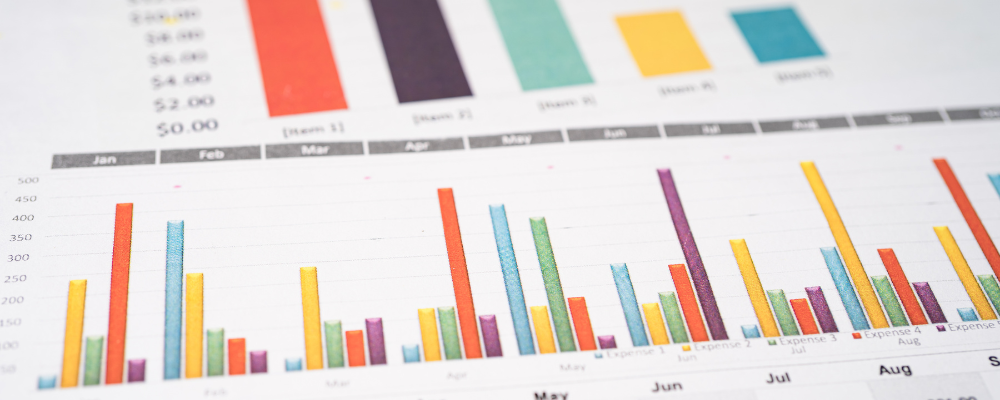Today, data reigns supreme in the digital age. It’s the lifeblood of business, the guiding star in decision-making, and the catalyst that propels companies toward unprecedented success. Among its many applications, data’s role in the realm of lead generation stands out as a game-changer, a key that unlocks the treasure chest of potential customers waiting to be discovered. A dynamic and transformative approach that redefines how businesses connect with their target audiences, Data-Driven Lead Generation has revolutionized business lead generation.
Get ready for a ride that promises to reveal the true power of data-driven lead generation, the secrets to identifying and nurturing prospects in a way that has never been seen before. The treasure trove of insights and strategies that follow will equip you with the tools you need to take your business to the next level, turning data into more than just numbers, but into meaningful connections and revenue opportunities.
The Role of Data in Lead Generation
Data-driven lead generation has become a fundamental strategy in the fast-paced world of contemporary business, where information is both power and competitive advantage. Let’s explore the pivotal role data plays in the lead generation process, understanding what it is, why it’s so crucial in the modern business landscape, and where you can source this invaluable resource.
What Is Data-Driven Lead Generation?
Data-driven lead generation is a strategic approach that leverages data to identify, attract, and convert potential customers into leads. It’s a methodology that empowers businesses to make informed decisions by analyzing customer data, behaviours, and preferences. Through this process, organizations gain a more profound understanding of their target audience, enabling them to tailor marketing efforts and create personalized experiences that resonate with prospects.
This approach goes beyond traditional marketing, where companies often cast a wide net, hoping to catch the right customers. Instead, data-driven lead generation enables businesses to cast a precisely targeted net, significantly increasing the likelihood of connecting with those who are genuinely interested in their products or services. By understanding customer behaviors and preferences, companies can create content and offers that are highly relevant, thus boosting conversion rates and overall marketing efficiency.

Sources of Data for Lead Generation
Data for lead generation can be sourced from a variety of channels and methods:
Website Analytics: Information from your website, such as user behavior, traffic sources, and conversion rates, is a valuable source of data for understanding how potential leads interact with your online presence.
Social Media Insights: Social media platforms provide valuable data on user demographics, interests, and engagement metrics, offering insights into potential leads’ preferences and behaviors.
Customer Relationship Management (CRM) Systems: CRM systems store and organize customer data, enabling businesses to manage and track interactions with potential leads and existing customers.
Surveys and Feedback: Direct feedback from customers and surveys can yield valuable data on their needs, pain points, and preferences.
Third-party Data Providers: Numerous companies specialize in collecting and selling data, offering a source of information on potential leads in your target market.
Email Marketing: Data from email campaigns can reveal how recipients engage with your content and offers.
Benefits of Data-Driven Lead Generation
Data-driven lead generation is a force to be reckoned with in marketing and customer acquisition. This approach offers a multitude of advantages that can transform the way businesses connect with their target audience. Here are some key benefits that highlight the power of data-driven lead generation:
Improved Targeting and Segmentation
Data-driven lead generation is like a spotlight in a dark room, allowing businesses to illuminate the precise areas they need to focus on. By analyzing data, companies can segment their audience with unparalleled accuracy. This means understanding not only who their potential customers are but also their unique characteristics, interests, and behaviors.
This improved targeting and segmentation result in more relevant and personalized marketing efforts. Businesses can tailor their messages and offers to specific customer segments, significantly increasing the chances of engaging and converting potential leads. It’s no longer about throwing a wide net and hoping for the best; it’s about honing in on the right individuals with a high probability of becoming customers.

Higher Conversion Rates
Lead generation is all about converting prospects into paying customers. Data-driven lead generation excels in this regard. By leveraging data to understand what drives potential leads, businesses can create compelling and personalized experiences that resonate with their audience.
A better understanding of the customer’s needs and pain points allows for the creation of more persuasive content and offers. As a result, conversion rates increase. When prospects feel that a product or service meets their specific needs, they are more likely to take the desired action, whether it’s making a purchase, signing up for a newsletter, or requesting more information.
Cost-Effective Marketing
In the world of marketing, resources are precious, and budgets are often tight. Data-driven lead generation optimizes the allocation of these resources by reducing waste. By targeting the right audience with the right message, businesses can avoid spending precious marketing dollars on those who are unlikely to convert.
This laser-focused approach not only saves money but also maximizes the return on investment (ROI). Businesses can invest their resources in activities and campaigns that are more likely to yield results. It’s a cost-effective strategy that ensures every dollar spent has a purpose and a potential for growth.
Enhanced Customer Insights
In the digital age, knowledge is power, and data-driven lead generation is a goldmine of insights. By continuously collecting and analyzing data, businesses gain a deeper understanding of their audience’s behaviors, preferences, and needs. This ongoing process of learning provides a competitive edge, allowing companies to stay ahead of changing market dynamics and customer expectations.
Enhanced customer insights enable businesses to make informed decisions and refine their strategies. They can adapt to shifting customer trends and preferences, ensuring that their lead generation efforts remain effective and relevant. This feedback loop of data and insights is a cornerstone of successful, long-term customer relationships.
Steps to Implement Data-Driven Lead Generation
Data-driven lead generation is not just a concept but a well-defined process that combines the power of data and strategic planning to connect with potential customers effectively. To implement this approach successfully, you’ll need to follow a series of crucial steps:

1. Data Collection and Analysis
The foundation of data-driven lead generation lies in data collection. Start by gathering relevant information about your target audience. This data can come from various sources, including website analytics, CRM systems, social media insights, and more. You’ll want to focus on data points such as demographics, online behavior, and interactions with your brand.
Analyzing data is the next step after collecting it. This step involves identifying patterns, trends, and insights within the data. Look for commonalities among your potential leads to understand what drives their interest and engagement. Through data analysis, you can create a clear picture of your ideal customer profile.
2. Building Buyer Personas
With the insights gained from data analysis, you can create detailed buyer personas. These are imaginative portrayals of your perfect customers, grounded in actual data.. Each persona should include demographic information, pain points, goals, and preferred communication channels. Building buyer personas helps you humanize your target audience, making it easier to craft personalized content and offers that resonate with potential leads.
3. Content Creation and Distribution
Armed with well-defined buyer personas, you can now develop content tailored to the needs and preferences of each persona. This content may include blog posts, videos, ebooks, webinars, and more. The key is to provide valuable, educational, or entertaining content that aligns with the interests and pain points of your target audience.
Distribution is equally critical. Use the channels where your audience spends time, be it social media, email marketing, or other online platforms. An omnichannel approach ensures that your content reaches potential leads where they are most active.
4. Lead Scoring and Qualification
Not all leads are created equal. Certain individuals have a higher propensity for conversion than others. Lead scoring is the process of assigning a score to each lead based on their behavior and engagement with your content and offers. The greater the score, the more proficient the lead becomes. Qualification criteria may include factors such as the number of website visits, downloads, email opens, and more. Once leads are scored, you can prioritize your efforts and focus on those with the highest potential. These qualified leads are more likely to convert, making your lead generation efforts more efficient and productive.
By following these steps, you’ll be well on your way to implementing a data-driven lead generation strategy that not only connects you with potential customers but also maximizes your marketing efforts. This approach aligns your marketing activities with the actual needs and preferences of your audience, ensuring a more effective and personalized customer journey.
Tools and Technologies
To harness the full potential of data-driven lead generation, businesses rely on a suite of tools and technologies that streamline the process and enable data-driven decision-making. Here are some of the key tools and technologies that are instrumental in this approach:
CRM Systems (Customer Relationship Management): CRM systems are the central hub for managing and organizing customer and lead data. These platforms allow businesses to store, track, and analyze interactions with potential leads and existing customers. CRM systems help in maintaining a detailed record of customer touchpoints, managing communication, and segmenting leads based on various criteria. They play a crucial role in enhancing customer relationships and ensuring that leads are effectively nurtured throughout their journey.
Marketing Automation Software: Marketing automation software is designed to streamline and automate various marketing tasks and workflows. These platforms enable businesses to create and manage personalized, data-driven marketing campaigns at scale. Marketing automation can help in lead nurturing, email marketing, lead scoring, and more. It ensures that potential leads receive the right content and messages at the right time, improving engagement and conversion rates.

Analytics and Reporting Tools: Data-driven lead generation relies heavily on the continuous analysis of data. Analytics and reporting tools, such as Google Analytics, Adobe Analytics, or specialized marketing analytics platforms, are essential for tracking the performance of marketing campaigns. They provide insights into website traffic, user behavior, conversion rates, and the effectiveness of various marketing channels. By analyzing these metrics, businesses can make data-backed decisions and optimize their lead generation strategies in real-time.
Data Enrichment Services: Data enrichment services offer a valuable resource for businesses seeking to enhance their lead data. These services provide access to a wealth of additional information about potential leads, such as job titles, company details, contact information, and more. By enriching existing lead data, businesses can gain a more comprehensive view of their leads, which enables them to tailor their marketing efforts more precisely.
Data enrichment services can help in understanding the specific needs and preferences of potential leads, facilitating better personalization and engagement.
Conclusion
In the modern business landscape, where data is not just information but the key to unlocking success, data-driven lead generation stands as a beacon of transformation. It’s the strategy that empowers businesses to connect with their audience in ways that were once merely dreams. As we conclude our journey through the power of data-driven lead generation, we see a future where every interaction is informed, every message is personalized, and every lead is nurtured with precision. The potential is boundless, the advantages are unmistakable, and the path forward is clear. In this age of data, those who harness its power will not only thrive but shape the future of customer engagement. It’s a future where data is not just a tool; it’s a force of connection, understanding, and growth. Embrace it, for the possibilities are endless.




